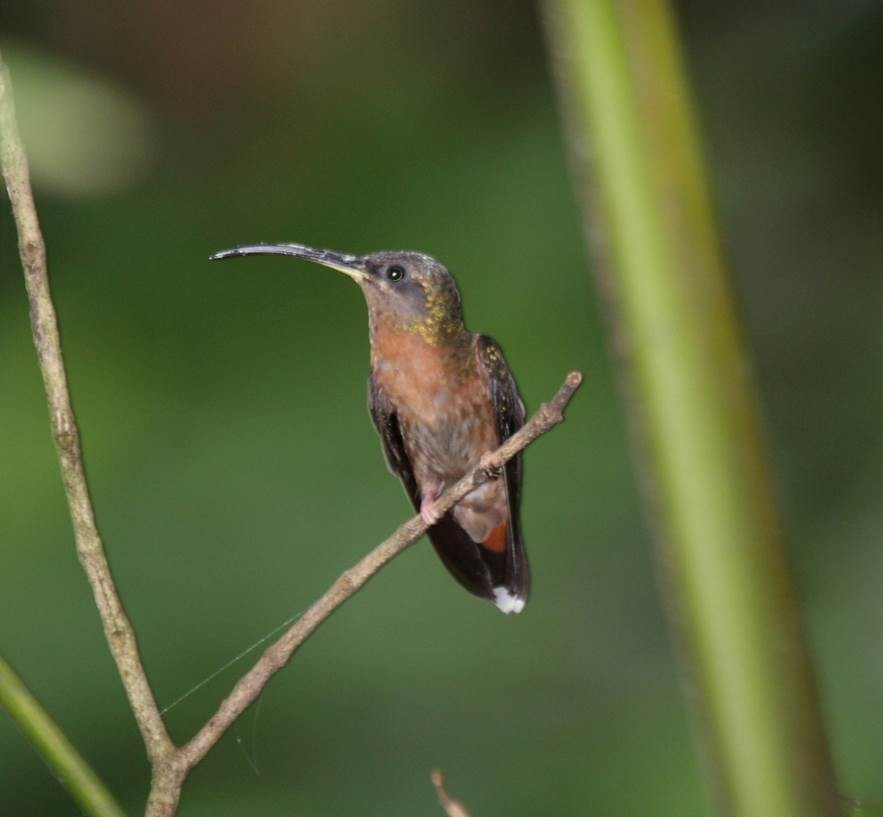Rufous-breasted Hermit
A species of Rufous-breasted Hermits Scientific name : Glaucis hirsutus Genus : Rufous-breasted Hermits
Rufous-breasted Hermit, A species of Rufous-breasted Hermits
Botanical name: Glaucis hirsutus
Genus: Rufous-breasted Hermits
Content
Description General Info
 Photo By Römert , used under CC-BY-SA-2.0 /Cropped and compressed from original
Photo By Römert , used under CC-BY-SA-2.0 /Cropped and compressed from original Description
It is 10.7 cm (4.2 in) long and weighs 7 g (0.25 oz) on average. The bill measures around 3.3 cm (1.3 in) and is strongly decurved, long and thin – though compared to the bills of other hummingbirds, it is rather robust. The rufous-breasted hermit has a brownish head, bronze-green upperparts and rufous underparts. The tail has green central feathers and rufous outer feathers, all tipped white. The bill has a yellow lower mandible and a black upper mandible. Sexes are similar, but the male has yellow streaking on the upper mandible, and the female may be slightly duller in plumage. The bill of females is also proportionally a bit shorter (though this is hardly recognizable) and more decurved (which is quite conspicuous in direct comparison). Males are somewhat more distinct, resembling a barbthroat (Threnetes). They were once described as a distinct species, the "black barbthroat" ("T. grzimeki"). Similarly, the proposed subspecies abrawayae is apparently based on individual variation occurring in adults and not taxonomically distinct either. The call of this species is a high-pitched sweet. 
Size
12 cm
Nest Placement
Tree
Feeding Habits
Rufous-breasted Hermit primarily consumes nectar but also feeds on small arthropods and insects. Its foraging behavior includes hovering to extract nectar from flowers, as well as adeptly catching insects mid-flight. A specialized long bill facilitates access to deep flowers, a distinct dietary adaptation.
Habitat
The rufous-breasted Hermit flourishes in the dense understory of secondary and disturbed forest types, including bamboo thickets and gallery forests. It is also found in man-made landscapes like plantations, and its range extends broadly from lowland areas up to 1800 meters, mostly under 1000 meters, with some higher-altitude exceptions.
Dite type
Nectivorous
General Info
Feeding Habits
Bird food type
Species Status
Not globally threatened.
Scientific Classification
Phylum
Chordates Class
Birds Order
Swifts and hummingbirds Family
Hummingbirds Genus
Rufous-breasted Hermits Species
Rufous-breasted Hermit